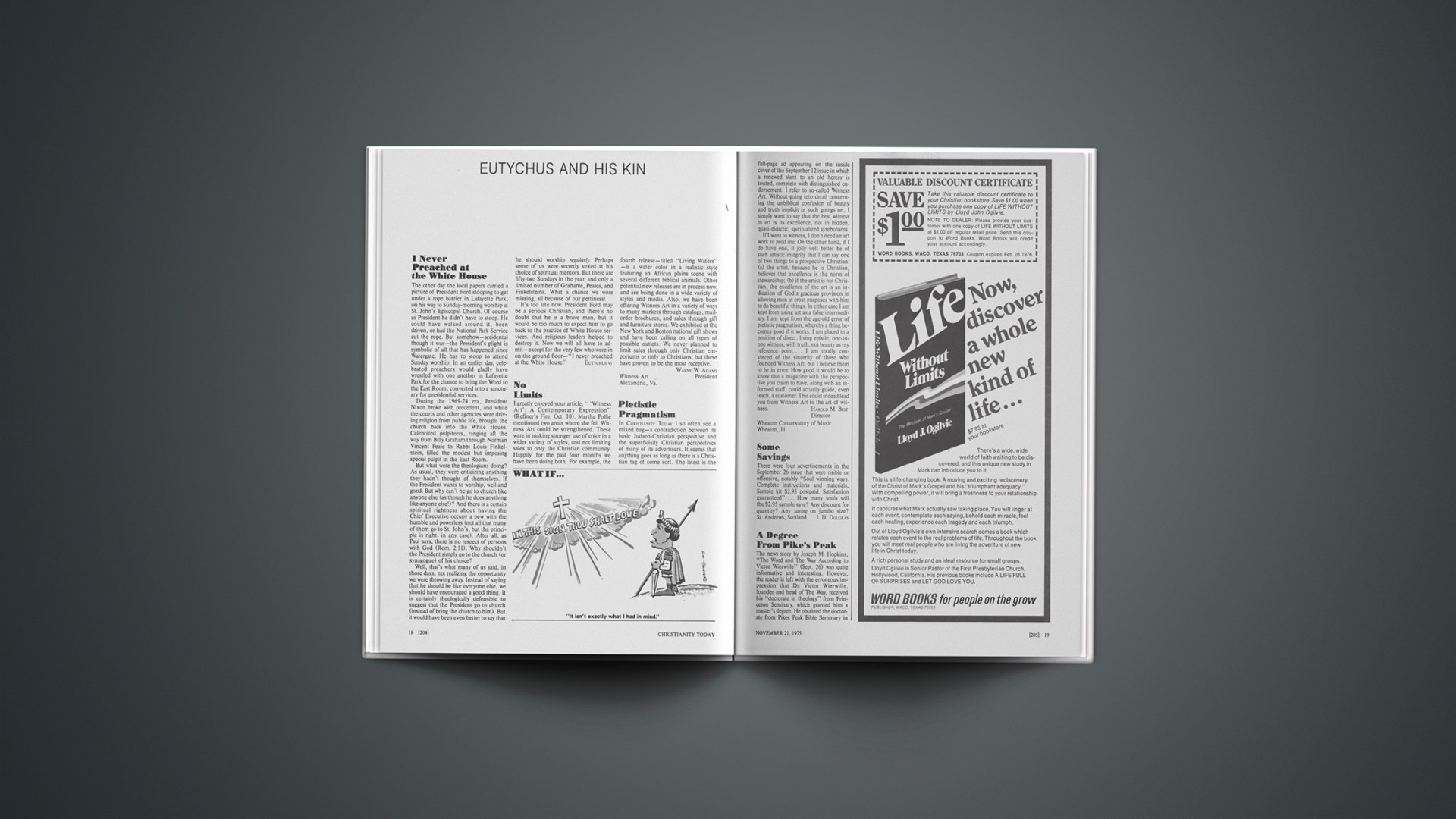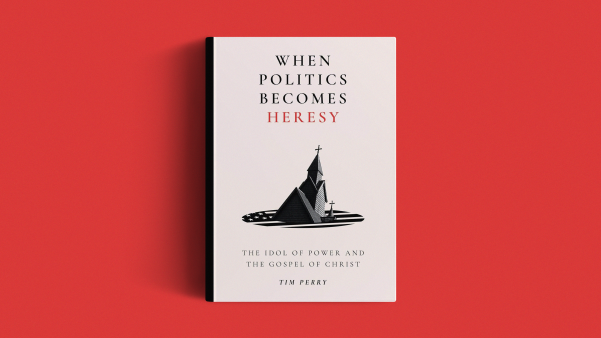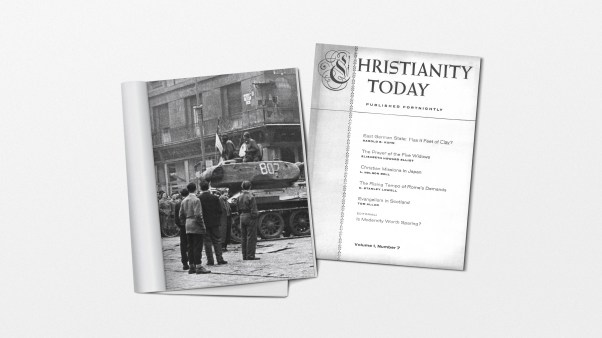The Aura Of Hermann Hesse
In Part I the author named three elements in the writing of Hesse (1877–1962) that are “significant for any attempt to understand Hesse’s appeal and what it can tell us about those to whom he appeals: (1) a repudiation of religious particularity while exalting “the religious”; (2) an idealization of authority, tradition, and the elite; (3) a virtually total lack of credible, meaningful women”
1. Hesse, as the child of a pietistic house, grew up in the the Swabian-Swiss-Allemannic milieu that fostered the Basel Mission but also the skepticism of von Orelli and the nihilism of Nietzsche. His comments on religion are typical of the enlightened, tolerant, mundane European intellectual who has “progressed” beyond hostility:
One religion is about as good as another. There is not one in which one could not become wise, and not one which could not also be practiced as the stupidest idol-worship. But almost all the real knowledge of mankind is gathered in the religions, particularly in mythologies. Every mythology is “false” if we consider it in any other way than piously; but each is a key to the heart of the world. Each one knows ways to make the idolatry of the self over into the worship of God [Lekture, 1952, p. 93].
The wisdom of all peoples is one and the same; there are not two or more, there is only one. The only thing that I have to criticize in religions and churches is their tendency to intolerance: neither the Christian nor the Mohammedan would be willing to concede that his faith is only good and holy, and not privileged and patented, but rather a brother to all of the other forms of faith in which truth tries to make itself visible. [Letters, (posthumous).]
“I do not think it most important what faith a man has, as that he have one,” he said elsewhere. Characteristic of Hesse, then, is an emphasis on form and attitude apart from specific content. He admires the spirit of all religion but not the doctrine of any one. And insofar as biblical Christianity is based on a unique and essential series of once-for-all events in history, and is communicated by the presentation of these as true history, Hesse’s attitude, like the tolerance of Hinduism, is for all its apparent mildness a ferocious attack on the Gospel and its proclamation. Even his Siddhartha removes the specific content from Buddhism.
Some years ago, when science and a kind of uncritical veneration of science seemed to dominate the Western intellectual world, Francis Schaeffer predicted that the last third of the twentieth century would be an age of “contentless mysticism.” Hesse, whose tremendous posthumous rise in mass popularity falls in this period, is a perfect illustration of the truth of Schaeffer’s prophecy.
2. The idealization of authority, tradition, and a highly disciplined, intellectually rigorous, arbitrarily selected elite is so characteristic of Hesse’s writing that it is extremely difficult to understand his appeal to a generation that appears to go beyond its immediate predecessor in repudiating all these things.
Hesse is in this respect the absolute opposite of Marcuse and revolutionary radicalism. This emphasis is the most important message of his work as a whole. Perhaps the first of his works to achieve wide popularity in the United States, Steppenwolf (1927), chronicles the disintegration of the inner values of bourgeois, individualistic man, despair over his loss of faith and the cult of individualism that repudiates the things of the spirit and takes refuge in the sensual. The possibility that the chaos it portrays can be overcome by a recovery of contact with underlying spiritual and cosmic being is only suggested.
Steppenwolf seems rather anachronistically placed in Hesse’s work between Siddhartha and Journey to the East (1932). It is as though Siddhartha had been received as a lovely but irrelevant legend, and Hesse reacted in Steppenwolf by showing the bankruptcy and inner disintegration of bourgeois individualism. Then, in Journey, with its pilgrimage motif, he proposes a physical as well as a spiritual journey to recover in the Morning Land what has been lost in “the decline of the West.” The Morgenlandfahrt is thus one attempt to answer Spengler’s Untergang des Abendlands (Decline of the West, 1918).
Hesse, who became a Swiss citizen in 1924, repudiated the national-racist-militaristic elitism of a segment of the German literary world (e.g., Stefan George, 1868–1933), later taken over and perverted by the Nazis. But nevertheless his own writing contains a “militaristic” strain; the “order” of both the Journey and the Glass Bead Game (1943) is more reminiscent of a crusading knightly order than of a contemplative one. Significantly, the “Ordensgedanke,” the concept of the “order,” is never justified, as the establishment of the actual monastic and military orders was, with reference to a specific content of faith: it is, one might say, mission without message. (The German word. Sendung, one translation of which is “mission,” carries with it the concept of high purpose and authorization, but lacks the association or the proclamation of a message, i.e., the Gospel, that is associated with the more specifically Christian term Mission in German.)
The order and the journey of the Morgenlandfahrt are placed in a kind of timeless setting that could be the Middle Ages. (There is virtually no reference to modern technology or its products in Hesse.) Yet explicit mention is made of “Wilson’s betrayal of the democratic world vision.”
The themes of order, self-discipline, and the quest for wisdom, ending in momentary failure but with the promise of a continuation of the quest in Morgenlandfahrt (1932), are taken up again in Das Glasperlenspiel (The Glass Bead Game, also published as Magister Ludi in English, 1943). Here we have the themes of an order with a system of elite schools existing parallel to ordinary society and having very few contacts with it. The “elite pupils,” some of whom will later become players in the glass bead game, are chosen by an unnamed authority that determines virtually every detail of their future life.
In one respect, this parallels the dreadful vision of Franz Kafka’s The Trial (1925) and The Castle (1926), with the significant exception that in The Glass Bead Game, the authority, while unquestionable, is benevolent. The reason for the existence of the order and the game is to preserve a kind of intellectual heritage in the “age of the mass media” (Hesse used another expression, as this was not yet in vogue, but it seems to represent exactly what he detested), and he explicitly compares it to the work of the “Roman church in its mightiest epochs.” But from Catholicism he takes only the form, the discipline, and the idea of a militant, obedient order, not the content—in the same paragraph he mentions the Chinese and Socrates as models.
While some of the intellectual elite of The Glass Bead Game devote an entire life to one or another question of history or philology that, while obscure, might seem to have some recognizable value, the glass bead game itself, never explained or defined, is a kind of higher degree of abstract intellectual knowledge, discipline, and skill for its own sake—the art of preservation, transmission and improvisation carried to an incredibly high pitch.
The Glass Bead Game is seen as an attack on the degradation of values, tradition, and authority represented by Nazism. Yet many of its institutions parallel those of Nazism—the S.S. was an “order,” and the Nazis established Napolis (Nationalsozialistische Politische Erziehungsinstitute, National Socialist Political Education Institutes, of which Hesse’s elite schools might seem a transfiguration). Hesse seems to be telling us, “Yes, but not thus!” And this may be the message of his popularity among the modern generation: not a repudiation of authority, tradition, and discipline, but a repudiation of that which exists in favor of an ideal drawn from chivalry or the East.
The difficulty is that Hesse has only tried to change the tone, or at most the total attitude of institutions, but has not gotten to the spiritual source from which this authority, tradition, and discipline are to be drawn. Perhaps as a child of the nineteenth century he felt the medieval European Christian heritage so strongly that he did not recognize that his appeal would strike a later generation as the call to rebuild empty forms and windowless buildings. One can no longer appeal to “tradition” beacause all content is lost: today there must be an explicit definition of the content of “tradition,” just as the Gospel needed to be preached clearly and in some detail in the Roman Empire’s melting-pot of races, religions, cultures, and philosophies.
Hesse detested Hitler’s perversion of his elite ideal (and so did Stefan George, whose work provided more models for the Nazis). But he does not offer us, with his appeal to preserve form, any greater hope than Marcuse with his frenzy for the destruction of form. Form is important to preserve meaning, but form without content is a mockery of meaning.
3. The absence of real women in Hesse is striking both in itself and in the light of his popularity in our own age, supposedly an era of the rediscovery of the personhood of women. According to Hans Schwerte, Hesse is characterized by the “tension between the spirit of the father and the realm of the mother.” Schwerte goes on to say:
The guideword for the “new man” is: Man’s true calling is to come to himself! But in coming to himself he “descends into a primeval interwovenness.” It is the discovery of the protective primitive-maternal nature of all creaturely being, a return to early mysteries of light and darkness, spirit and nature [Der Weg ins zwanzigste Jahrhundert,” in Annalen der deutschen Literatur, 808].
The (male) pilgrims find their way to certain unspecified order and meaningfulness, and en route are helped by female figures who are symbols of the womanly rather than real persons (in Demian, the woman is named Eve). Even the males, though portrayed in much more detail, are drawn so simply and with such unnatural singleness of character that they too must strike us as symbols rather than as people.
No doubt many different conclusions could be drawn from the lack of real women in Hesse. I suspect that it is not that he did not encounter individual women or think of them as persons (after all, he was married thrice), but because his whole literary work is a repudiation of the historical, particular, individual, in the direction of forms, symbols, and types. Not the particular Gospel, but “religion”; not Dominicans, Franciscans, or even the Knights of the Cross, but “the order”; not real women, but symbolic figures; not even real men, but types.
Hesse’s “solution” to the disintegration of values in the modern world, to the extent that he offers one, is milder than Marcuse’s, and it does not involve compulsion, repression, and terror. But it is really only the image of a solution: he shows the forms that could preserve values, but not the values to be cherished and preserved. Even his people are only symbols. If we were to attempt to draw a political method from his art, we would perpetuate the same type of problem that is characteristic of Marxism: forcing individual human beings into conformity with inhuman abstractions. In the case of Marxism, the abstractions are starkly inhuman; in the case of Hesse, they are rich, traditional, familiar symbols, but still abstractions.
From Hesse’s popularity, then, we may draw the conclusion that much of the rejection of “traditional values” in society today is precisely not a rejection of the idea of authority, tradition, or form, but of their alienation. And the social answer to this form of criticism will lie neither in further dismantling the institutions and values that still exist, nor in reinforcing the forms, but in rediscovering the content.
Nothing substantial can be built on Hesse’s vision, but perhaps the persistent, nostalgic appeal of his quest motif to modern Americans will encourage us to a clearer, more distinct, and harmonious presentation of the Gospel, of the truth of which all Hesse’s fond mythologies are at best distorted memories or pale reflections.
HAROLD O. J. BROWN
Harold O. J. Brown is the associate editor of the Human Life Review, Washington, DC.
Newly Pressed
Hidden Manna, Merv and Merla (Catacombs Productions Ltd. [Box 236, Don Mills, p.o., Ontario, Canada, m3c 2s2]; CPL 1002). All the songs in this fine album were written by this talented husband-and-wife team. Although both are Gentiles, they write music with an authentic Hebrew sound. Most of the lyrics come from the Old Testament, primarily the Psalms. Merla plays, among other instruments, violin, viola, and piano, Merv classical guitar, accordion, and percussion. Both have pleasing, well-trained voices. The color of Merla’s voice in particular is well suited to the haunting, lyrical quality of Jewish music. “Hidden Manna” and “Unto the Hills” show the two at their best. From the cover, a banner, “Miriam,” in purple, red, and gold, to the sensitive performances on the record, the album reflects artistry coupled with spiritual reality.
Chuck Girard (Good News Records [8319 Lankershim Blvd., North Hollywood, Calif. 91605; distributed by Myrrh Records]; GNR-8102). This is the first solo album from a former Love Song member, and a good effort. But if I were to choose between Hidden Manna and Chuck Girard, the former would get my money. Much of Girard’s music is standard pop rock. “Tinagera,” for example, sounds no different from half a dozen love ballads popular during the sixties. “Galilee” is the best cut on the album.
CHERYL FORBES










